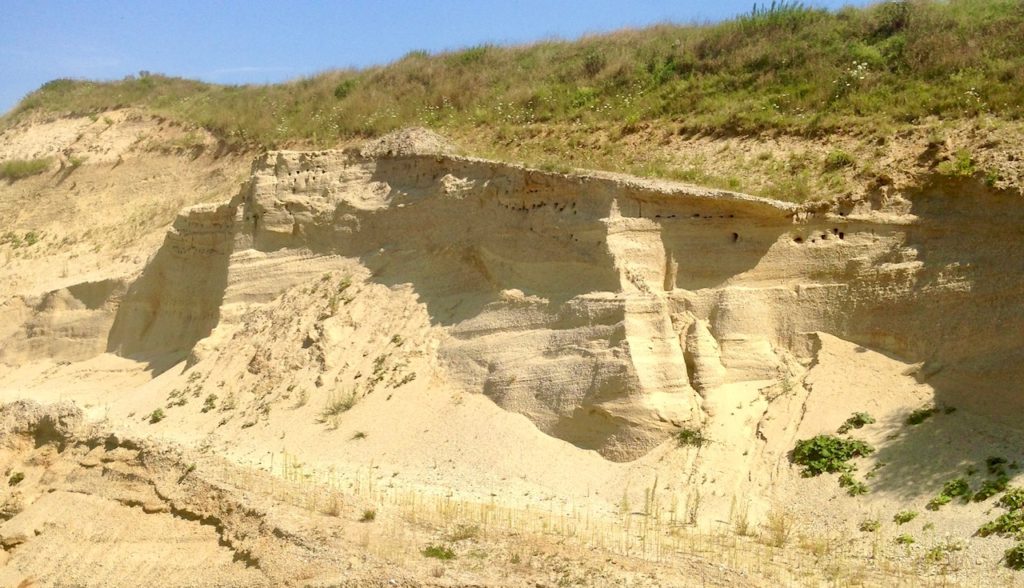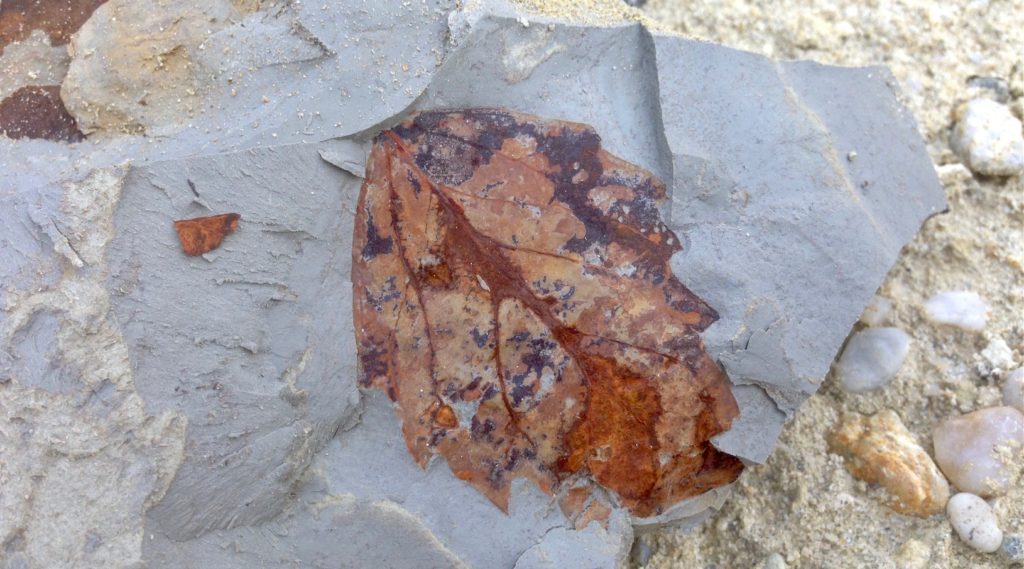It’s time for the annual end-of-year musings known as Shadows and Reflections. Since so many of our lives were lived in thematic overlap this year, we’ve asked our contributors and friends to focus on the small, strange and specific as they look back over the last 12 months. Today it’s the turn of Katherine Price.

Bavaria, 1 August 2020. 8 am. It was Saturday, so the quarry was deserted. It was already fiercely hot, one of those days when you feel winded before it even starts. The forecast was for thirty-four degrees, the sky was relentless blue and the main pit was as smooth and sculpted as a slab of halva.
On weekends and public holidays, when the big yellow machines fall silent, amateur paleontologists come to these places to dig for fossils. That’s why we were there, on the hunt. Andreas had an idea for a small exhibition about the prehistoric landscape of Bavaria and we were looking for exhibits. But from the get-go I was watching the clock. By eleven, I thought, the heat would be unbearable.
Leaving our bikes on a gravel bank, we climbed a steep crumbling slope, riven with run-off channels from summer downpours, dotted with dusty weeds. On the edge of a higher terrace, in the shade of a cliff, the fifteen million-years-old molasse layer was obvious, a grey-blue seam about forty inches deep.
We chose our spot, set out our tools, put on our gloves and got to work, using a spade to dig out blocks of clay, maybe a foot square and six inches deep. Two hours, I figured, before the sun reached us.
I was weighing the lump in my hands, heavy and cool to the touch, and that’s when I heard the martins. It often happens when you’re out in an unfamiliar place – you sense things for quite a while before you make sense of them. I’d been aware of something happening over my shoulder, out of focus, and a vague but constant sound. I put down the clay, and went to investigate.
Beyond a protruding stack of sandstone, a sand martin colony in a concave cliff, not yet in the sun. The grating staccato chatter never stopped as the tiny brown and white birds flew in a revolving swarm, so fleet and acrobatic, it was hard to keep track of an individual. Out and back, out and back, plucking insects from the air to feed what by then must have been their second brood of the year.
I didn’t watch for long, though. Time was ticking, so I went back to the seam.
If you’re lucky, Andreas said, the shale splits along its thin laminae. Following his lead, I pushed the broad blade into the mudstone (molasse means soft), held my breath and applied gentle pressure.
The sun got higher and sweat pricked at my hairline and the martins flew out and back, out and back. We glugged our water and ate pistachios. The spoil heap grew with failures and blocks that yielded nothing.

Oh, when it goes right, though! Like cracking open a mold to reveal the casting. Our haul of beautiful fossils grew too. A serrated leaf, ochre mottled purple, its veins chestnut brown, perfectly delineated. What looked like the split case of a nut, burnt sienna. Three creamy yellow strips of grass. A rich rust rectangle of wood. A smooth oval leaf, cardinal purple.
Hunched over our best finds to shield them from the pounding rays, we carved away the superfluous clay and wrapped them in protective layers of newspaper. Dry them out too fast and they crack and crumble, too slow and they get moldy and the beautiful pigments are destroyed.
When these leaves and fruit fell into the water and sank into the mud, when branches or whole trees toppled into the sediment, hominids were just a twinkle in the planet’s eye. The Miocene was an era of mountain building, and to the north of the rising Alps, a depression formed where the European plate was submerging under the African plate. Over time, this basin filled with debris brought down by the rivers, and plants colonized the resulting land. If you were suddenly transported back, you’d recognize, more or less, a lot of the animals. Sabre-toothed tigers, pig-like omnivores, primates, the forebears of elephants, hoofed grazers, early rodents, living in the forests and expanding grasslands.
Here, in our actual hands, were actual elements of that Miocene landscape, ‘riparian’ plants, so-called because they grew along river margins and banks. Ancestors of plane trees, poplars and willow relatives, ginkgo and swamp cypress, exposed to the air for the first time in fifteen million years.
And there, in the sky behind us, were birds very like the birds that flew in that same landscape. The sand martin’s scientific name is Riparia riparia (‘of the river bank, of the river bank’, like a song).
There was something magical about the layering of time, the incessant rhythm of those small winged creatures, the daily arc of the sun, the annual cycle of birds’ migration across continents, the deep time of their evolution and the suspension-in-time of the plants.
As we worked, the clock that had been ticking down in my head fell silent. And, in this weirdest of weird years, when time has alternately staggered along like a zombie and run like sand through a timer, those few hours in the quarry have stayed with me, extending through the months, shimmering like a heat haze.